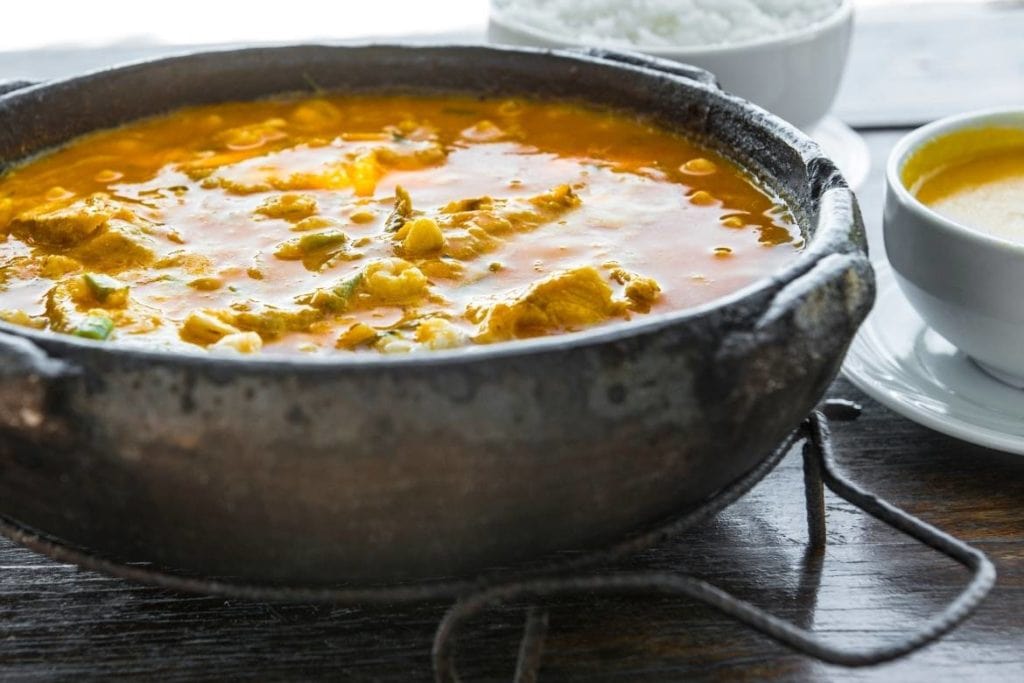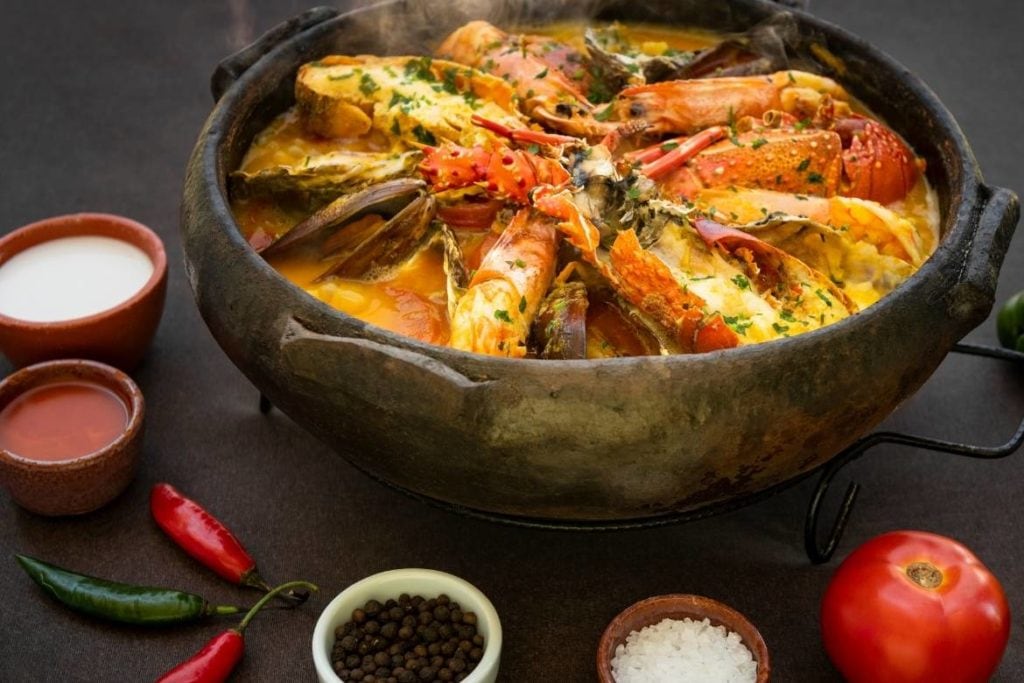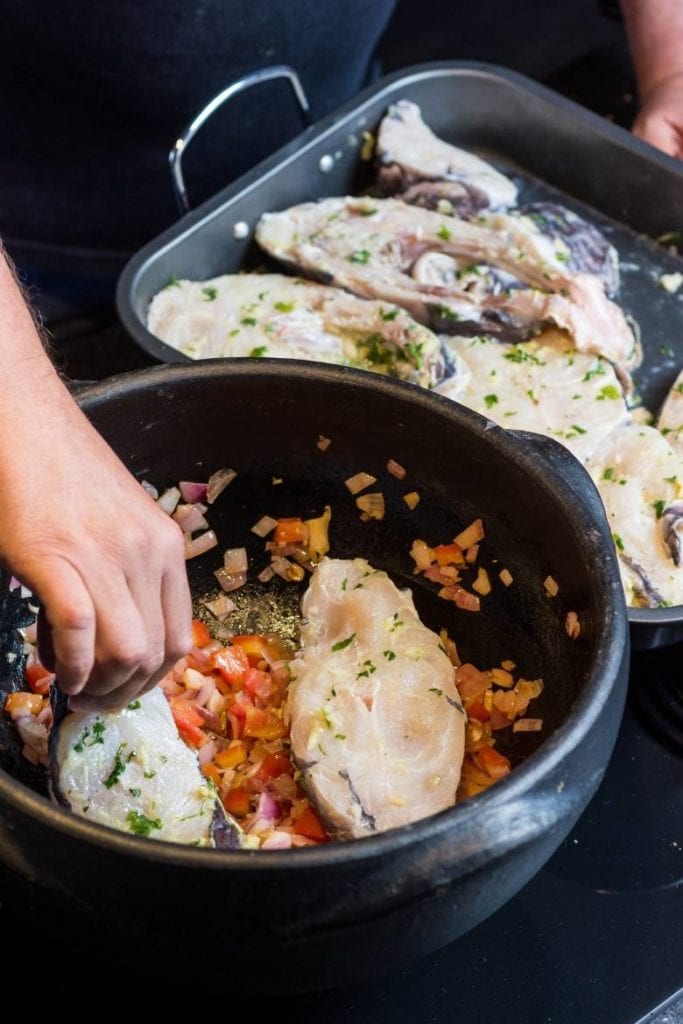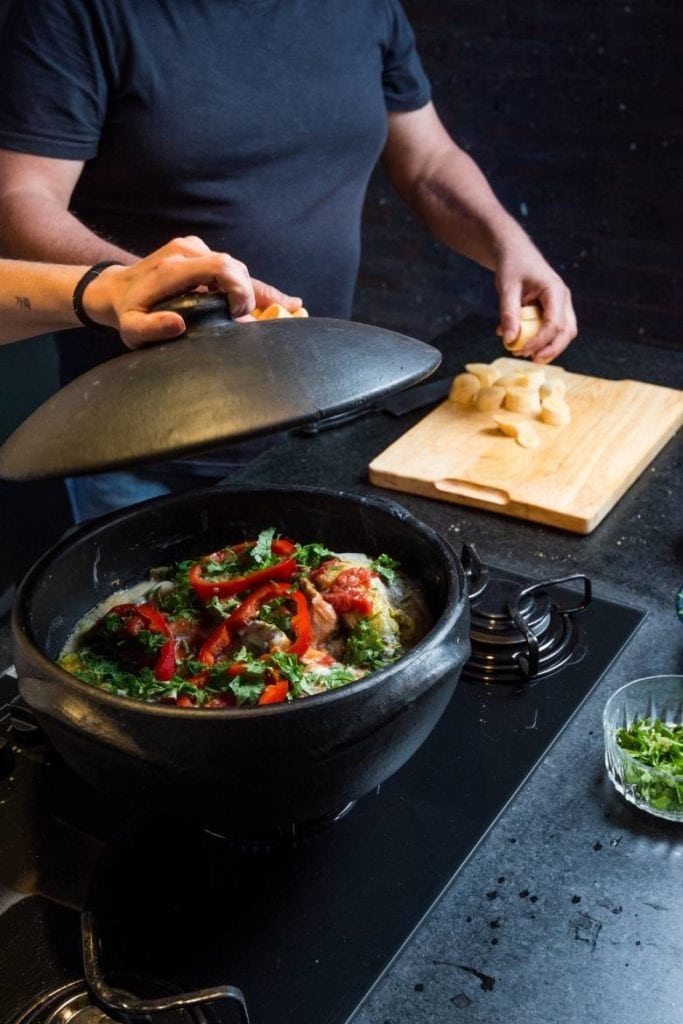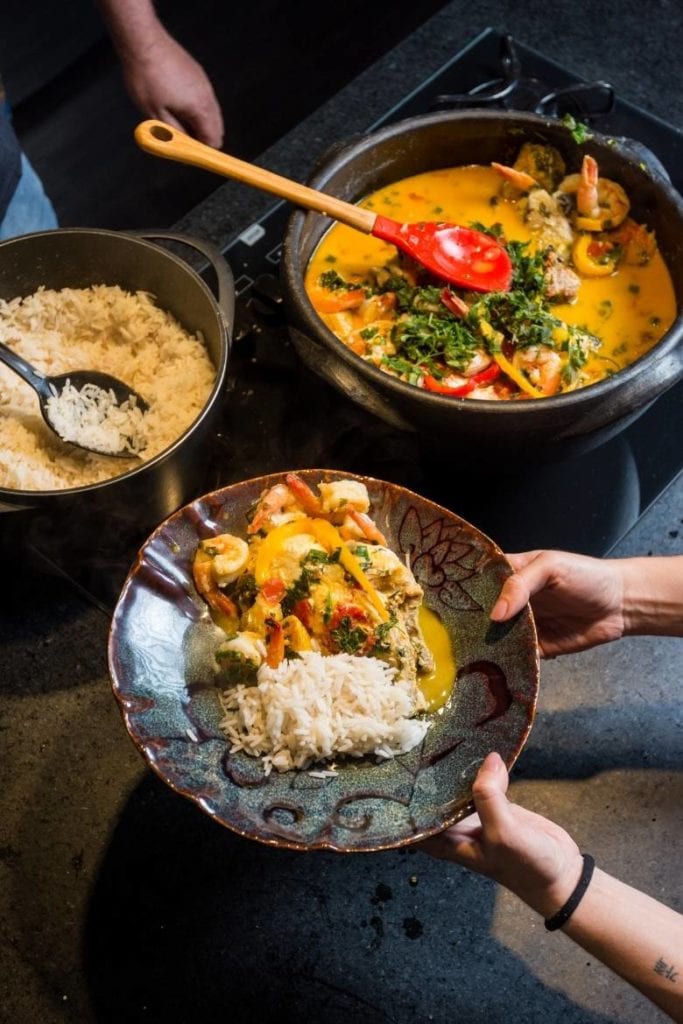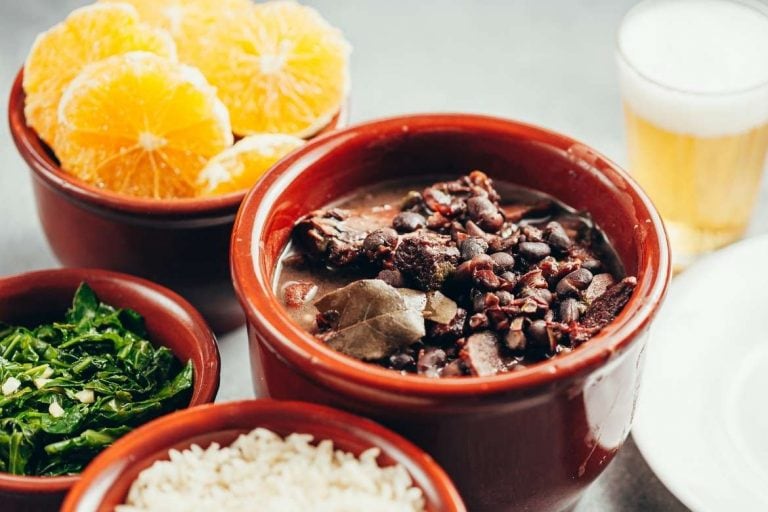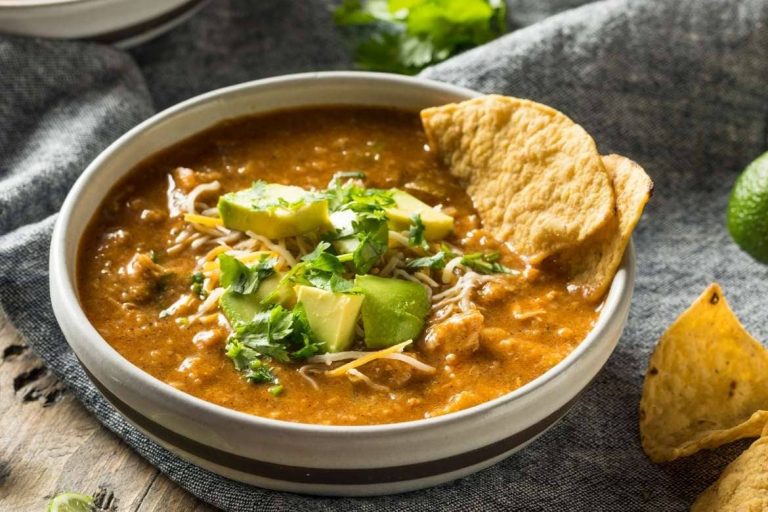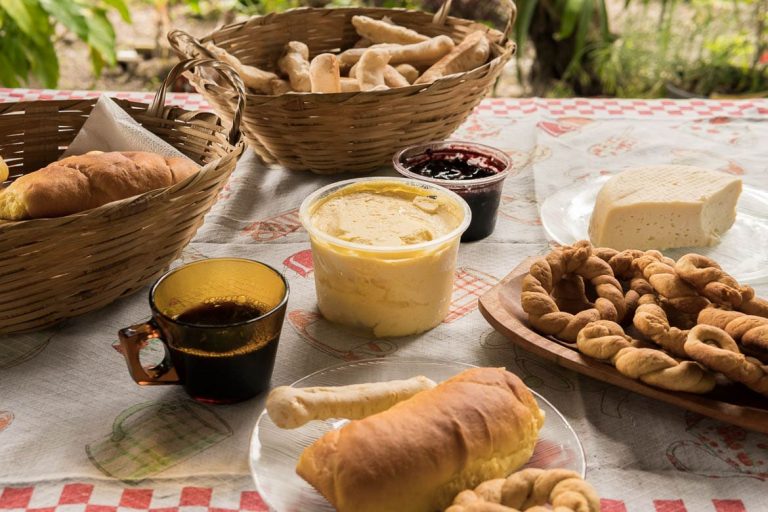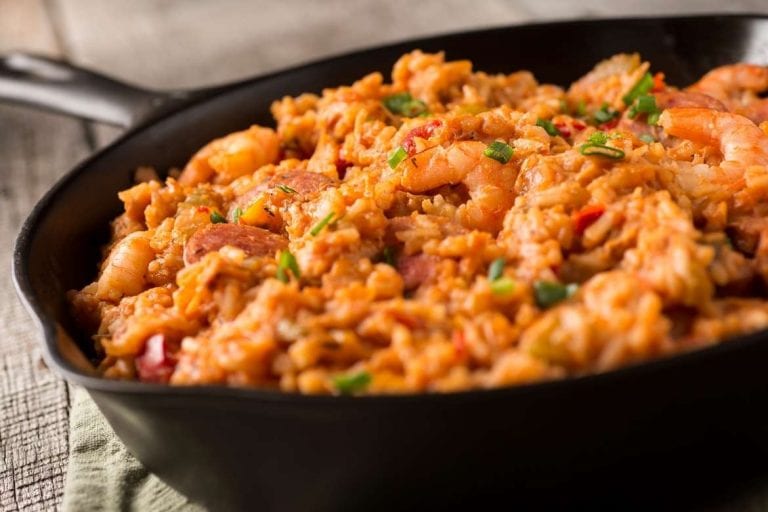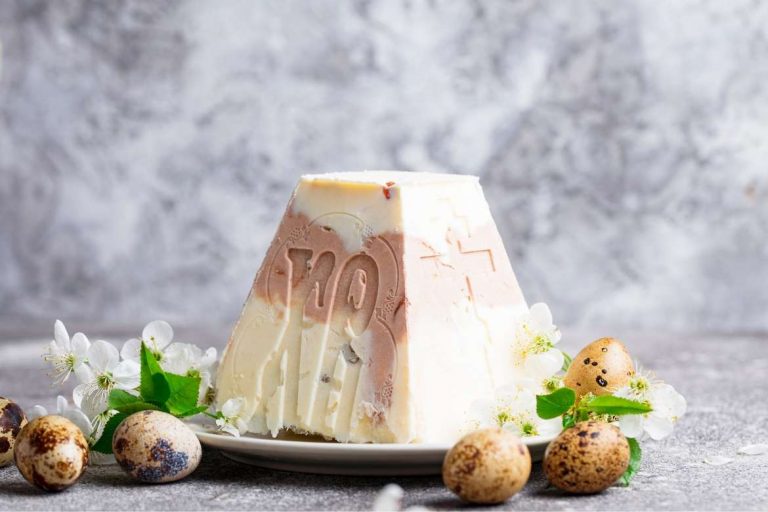Brazilian moqueca is a true nation staple. Widely consumed from north to south, especially in coastal regions, moqueca has several variations and brings with it the history and particularities of the Brazilian people.
In this article, you will learn more about this famous preparation of Brazilian cuisine.
Also read: Discover the main Brazilian dishes and regional foods
What is moqueca?
Moqueca is a stew, usually based on fish and/or seafood, seasoned with various herbs and peppers. This dish has many variations that use coconut milk, dendê oil (palm oil), jambu, coriander, urucum (annatto seeds), and others.
Even with all this diversity in moqueca ingredients, the unifying element of the more traditional moqueca recipes is the clay pot. This pot is responsible for cooking the fish and seafood evenly and perfectly harmonizing it with the seasonings, giving the dish a unique flavor and keeping it warm for longer.
The origin of Brazilian Moqueca
Moqueca is a dish that uniquely expresses the various cultures that formed the Brazilian people. Its origin is the result of indigenous, African, and Portuguese influences, mixing techniques and ingredients from several continents in an authentically national dish.
One of the great influences for the emergence of moqueca was an indigenous dish called pokeka. In this recipe, the fish was cooked and wrapped in leaves. The word pokeka comes from the Tupi language in an allusion to the word ” wrapped”. In addition, the primitive ovens used by the natives for this preparation were called “moquém“.
Indigenous cooking techniques and tropical fish availability merged with the Portuguese culinary tradition of “cozidos”. The Europeans arrived in Brazil and brought with them their culinary legacy, the vegetable stews. Over time, fish was incorporated into the preparation of these dishes, forming the basis of today’s moqueca.
With the arrival of Africans in Brazil, other ingredients were added to the fish moqueca recipe, such as dendê oil (palm oil), chili pepper, and coconut milk, especially in the Bahia region. Thus, the African culture joined the European and indigenous influences, originating a dish appreciated all over the country for its rich flavors, the Moqueca Baiana.
The different types of Moqueca
The preparation of Brazilian moqueca expresses local influences from different regions of the country. Therefore, there are variations in the recipes and ingredients used. The three main types of moqueca in Brazil are Moqueca Baiana, Moqueca Capixaba, and Moqueca Paraense. Each one reflects the history and ingredients of their region.
Moqueca Baiana
The Moqueca from Bahia has a strong African influence. Traditionally, it is a fish moqueca cooked in palm oil and coconut milk. It can also include shrimp or other seafood. The seasonings can vary but generally include bell pepper, chili pepper, and cilantro.
Moqueca Capixaba
The moqueca capixaba, from the state of Espírito Santo, reflects more intensely the indigenous and Portuguese legacy. In the traditional recipe, annatto oil and olive oil are used for cooking the fish and seafood. The result is a milder dish than the Moqueca Baiana, emphasizing the flavors of fish and seafood.
Moqueca Paraense
Although less known than the Moqueca Baiana and Capixaba, the Pará version of the dish perfectly symbolizes the flavors of Northern Brazil. In its preparation, Amazonian fish, tucupi, manioc starch, and jambu are used. This union of ingredients brings a surprising and intense flavor to the dish.
What is the best fish to make Moqueca?
Moquecas are simmered to ensure that all the spices and ingredients harmonize, so it is better to choose a white fish with a firm consistency. This way, the fish will not fall apart during cooking. Good fishes for making moqueca are: seabass, haddock, and grouper.
The main fish to make moquecas in Brazil are: cação, robalo, dourado, pintado, badejo, namorado, papaterra, dentão, filhote and garoupa. However, it is possible to innovate in the choice of fish, using, for example, codfish.
One of the secrets for the fish moqueca is not to stir too much during the cooking process so that the fish remains whole.
What is the best seafood to make Moqueca?
The most traditional recipes use shrimp, but it is possible to prepare moquecas using other seafood such as squid, mussels, octopus, and crab.
When preparing seafood moquecas, it is important to observe the cooking time of each ingredient, which can vary from one to another. Thus, the seafood needs to be put in the pan at different times, ensuring all ingredients reach each ideal cooking point.
Moquecas are not only from the sea
In addition to the traditional fish and seafood moquecas, Brazil has several variations of this dish that cater to all tastes and dietary restrictions. One example is chicken moqueca, in which only the main protein is substituted, keeping the other ingredients and preparation method. There are also egg moquecas and dried meat moquecas.
Vegetarians also have several options to enjoy this traditional Brazilian dish. Some ingredients that can perfectly substitute fish and seafood for preparing a vegetarian or vegan moqueca are pupunha palm heart, plantains (cooking banana), shitake, and mushrooms.
How is moqueca consumed in Brazil?
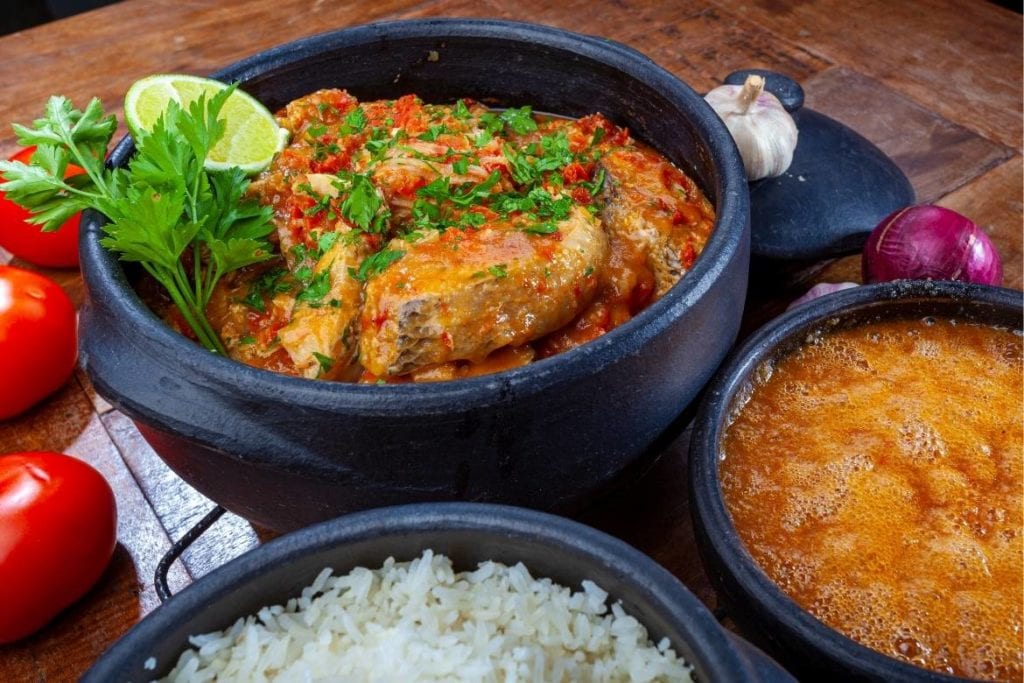
Traditionally, fish moqueca is served in the clay pot used to cook the dish or in a ceramic bowl, which also helps maintain the temperature.
As side dishes of moqueca, white rice and pirão de peixe (a type of fish gravy) stand out. Another popular option is the Brazilian farofa, which can be made with palm oil, banana, and other ingredients. As for drinks, good options are fruit juices, beer, caipirinha, or even a dry white wine.

